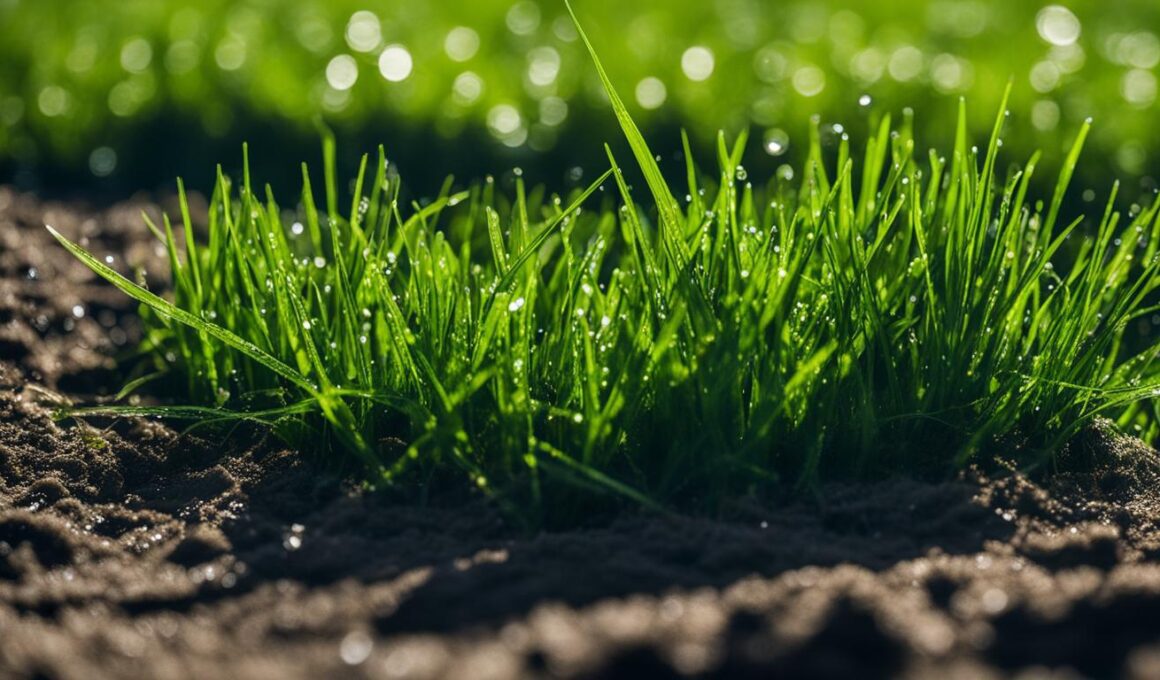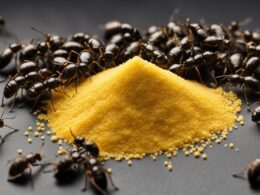Have you ever noticed small dirt mounds appearing in your yard after it rains? Don’t worry, you’re not alone. These mounds are a common occurrence and are typically caused by earthworms. Yes, those little creatures that burrow through the soil and help create healthier lawns.
So, why do these small dirt mounds appear after rain? Well, it all comes down to the earthworms’ activity. As they tunnel through the soil, they feed on organic matter, breaking it down and leaving behind their castings, which are essentially worm excrement. These castings accumulate on the surface and form those tiny mounds you see.
But here’s the good news – these earthworm castings are actually beneficial for your soil. They are nutrient-rich and act as a natural fertilizer, improving the overall health and fertility of your lawn. So, while they may not be the most aesthetically pleasing, these mounds are a sign of healthy soil.
If you find the mounds bothersome or want to manage them, there are a few simple steps you can take. When the mounds are dry, you can rake them to distribute the castings more evenly. Another option is to adjust your lawn watering routine. Earthworms thrive in moist soil, so reducing the frequency of watering can help lower their population. You can also raise the mowing height to hide the mounds or explore methods to reduce the earthworm population through non-harmful means.
Remember, those small dirt mounds in your yard after rain are nothing to worry about. Embrace the beneficial work of earthworms and enjoy the natural benefits they bring to your lawn.
What Causes Small Dirt Mounds in Yards After Rain?
Have you ever noticed small dirt mounds appear in your yard after a rainy day? Don’t worry, these mounds are actually a result of earthworm activity. When earthworms tunnel through the soil, they consume organic matter and excrete waste in the form of castings. These castings accumulate on the surface, leading to the formation of the mounds. The moisture from the rain helps bring these castings to the surface, making them more visible.
Earthworm castings are beneficial for your yard as they improve drainage and provide essential nutrients to the soil. They act as a natural fertilizer, enriching the earth beneath your lawn. The small dirt mounds are most likely to appear in the spring when the soil is saturated and perfect for earthworm activity.
If the small dirt mounds become a nuisance, there are several methods you can employ to manage them. When the mounds are dry, you can simply rake them to even out the surface of your yard. Adjusting your lawn watering practices can also help minimize the appearance of these mounds. Conserving water or reducing irrigation during rainy seasons can prevent excessive earthworm activity. Another approach is to raise the mowing height to effectively hide the mounds. Finally, if you find the mounds persistently troublesome, reducing the earthworm population by limiting their food sources can help mitigate the issue.
Remember, these small dirt mounds are harmless and often beneficial for your yard. They are just a sign that your soil is healthy and alive. By understanding the causes and implementing some management techniques, you can coexist peacefully with these natural formations.
Next, let’s explore how to differentiate between earthworm castings and other causes of yard mounds.
Differentiating Between Earthworm Castings and Other Causes of Yard Mounds
To properly address the issue of yard mounds, it is crucial to differentiate between earthworm castings and other causes. Earthworm castings are clumped pellets that resemble the color of soil. Usually found in small mounds, these castings rarely exceed an inch in height. You can easily identify them by the visible soil particles that accompany them. Unlike earthworm castings, mounds caused by ants and burrowing insects tend to have very fine soil particles or sand grains.
When it comes to other potential culprits, mole crickets and moles can also create mounds in yards. However, they exhibit different patterns and damage symptoms. Mole crickets tunnel just below the soil surface, feeding on grass roots. On the other hand, moles tunnel through yards in search of soil-dwelling insects.
Proper identification is crucial in implementing the appropriate control measures for yard mounds. By understanding the characteristics of earthworm castings and distinguishing them from other causes, you can take the necessary steps to manage the issue effectively. Whether it’s adjusting lawn care practices or addressing the presence of insects, being knowledgeable about the specific cause allows for targeted and efficient solutions.
Do Small Dirt Mounds in Your Yard After Rain Indicate Poor Drainage and Water Damage?
Yes, small dirt mounds in your yard after rain could be a sign of poor drainage and potential water damage. To address this issue, consider the option to bury downspouts for drainage to help direct water away from your home and prevent further damage to your property.










